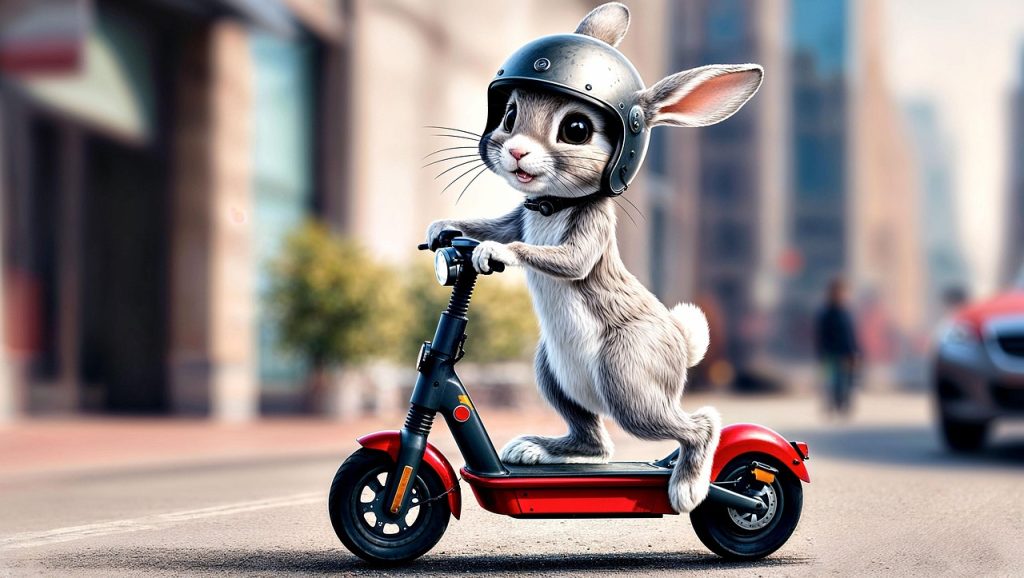Have you ever wondered what a mobility scooter is and how it actually works?
What Is A Mobility Scooter And How Does It Work?
A mobility scooter is a battery-powered vehicle designed to help you move around when walking becomes tiring, difficult, or unsafe. It looks a bit like a small motor scooter but is built specifically for comfort, stability, and low-speed travel in everyday settings.
You’ll find mobility scooters used by people with limited mobility to go shopping, get around the neighborhood, or travel through large indoor spaces like malls and airports. They’re an accessible, practical option that combines electric propulsion, intuitive controls, and supportive seating.
The Purpose and Benefits of a Mobility Scooter
Mobility scooters are intended to increase independence and quality of life by giving you a reliable way to travel longer distances than you could on foot. They reduce fatigue, help you remain active in community life, and often prevent the need for more restrictive mobility aids.
You’ll notice benefits such as improved access to public spaces, reduced strain on joints, and a safer option for outdoor mobility compared with walking long distances. Choosing the right scooter can transform how you manage daily tasks.
Main Types of Mobility Scooters
There are several common classes and types of mobility scooters, each suited to different needs. Understanding these types helps you match a scooter to your lifestyle and environment.
Travel/Portable Scooters
Travel scooters are lightweight and usually fold or break down into parts for easy transport. They’re great if you frequently put the scooter into a car or travel by public transport.
You’ll sacrifice some range and top speed for portability, but if you need something simple for short trips and easy storage, this is ideal.
Mid-Size/Standard Scooters
Mid-size scooters balance comfort, battery range, and durability. They work well for regular outdoor use and longer distances. You’ll get a bigger battery and more stability than with travel scooters.
These are often the most popular choice for daily errands and regular outdoor activity.
Heavy-Duty/Full-Size Scooters
Heavy-duty scooters have larger frames, stronger motors, and higher weight capacities. They’re best for rugged outdoor terrain, long ranges, and users who need maximum comfort and support.
You’ll get advanced suspension, larger batteries, and higher durability, but these models are heavier and less transportable.
3-Wheel vs 4-Wheel Scooters
3-wheel scooters offer a tighter turning radius, so if you need to maneuver in narrow spaces you’ll appreciate them. 4-wheel scooters are more stable, especially on uneven ground and at higher speeds.
Choose 3-wheel for indoor maneuverability and 4-wheel for outdoor stability.

Key Components of a Mobility Scooter
A mobility scooter is made up of several core components that work together to move you safely and comfortably. Understanding these will help you operate and care for the scooter.
Battery
The battery supplies the electrical energy for motion. Most scooters use sealed lead-acid (SLA) batteries or lithium-ion batteries. Battery capacity directly affects your range and charging frequency.
You’ll want to check battery health regularly and follow charging guidelines to maximize lifespan.
Electric Motor
The motor converts electrical energy from the battery into mechanical motion that turns the wheels. Motors vary in power (measured in watts) and affect speed, uphill capability, and towing strength.
Higher-power motors can handle steeper inclines and heavier loads.
Controller and Electronics
The controller manages power delivery from the battery to the motor based on your input from the throttle or tiller. It also houses safety features, such as speed limiters and fault detection.
Modern controllers can include diagnostics and programmable settings for speed and acceleration.
Tiller and Controls
The tiller is the steering column and houses controls such as the throttle, brake lever, horn, lights, and sometimes a control panel with battery gauge and speed settings. You’ll use the tiller to steer and operate the scooter.
Controls are designed to be intuitive so you can safely navigate while seated.
Braking System
Most scooters use regenerative braking through the controller and an electromagnetic system when you release the throttle, plus a mechanical parking brake for stationary safety. Some models include disc or drum brakes as additional safety features.
You’ll rely on these systems for smooth stops and safe parking on inclines.
Seat and Suspension
Seats range from basic swivel chairs to fully adjustable captain’s chairs with armrests and lumbar support. Suspension systems dampen bumps and provide a more comfortable ride outdoors.
Comfortable seating and good suspension reduce fatigue on longer outings.
Chassis and Wheels
The frame supports weight and determines durability. Tires can be solid or pneumatic; pneumatic tires give a softer ride while solid tires are puncture-resistant and low maintenance.
You’ll choose tire types depending on the terrain you’ll navigate.
How a Mobility Scooter Works — Step by Step
Understanding the basic operation helps you use the scooter safely and effectively. Here’s a typical sequence you’ll follow:
- You sit and adjust the seat and tiller for comfort.
Make sure seat height and tiller angle allow you to reach controls without strain. - You turn on the scooter using the key or power switch.
The battery gauge on the display will show charge level and any error codes. - You release the parking brake (if engaged).
Some scooters have automatic electronic brakes that disengage when you apply throttle. - You use the throttle control on the tiller to move forward or reverse.
Throttles can be paddle-style or twist-grip; some models have speed settings you can adjust. - The controller regulates power to the motor based on your input.
Smooth, gradual pressure on the throttle results in smooth acceleration. - You steer using the tiller to turn the front wheels or handlebar.
3-wheel scooters pivot more sharply than 4-wheel models. - You release the throttle to slow down; regenerative braking will reduce speed.
For a secure stop, apply mechanical brakes if needed or use the parking brake once stopped. - When finished, you power off the scooter and engage the parking brake.
Always charge the battery if you plan to use the scooter again soon.
Battery Types, Range, and Charging
Batteries are central to how your scooter performs and how much maintenance it needs. Choosing and caring for the right battery is critical.
Common Battery Types
- Sealed Lead-Acid (SLA): Economical and widely used. Heavier and less energy-dense than lithium, but typically cheaper.
- Gel batteries (a type of SLA): Better for deep discharge cycles and cooler environments.
- Lithium-Ion (Li-ion): Lighter, longer-lasting, and more efficient. They charge faster and hold more usable range, but cost more upfront.
You’ll weigh cost vs performance; if you travel long distances or need portability, lithium is often worth the investment.
Typical Ranges and Factors Affecting Range
Range depends on battery capacity (Ah), scooter weight, terrain, speed, and accessories (like lights or heaters). Typical ranges:
- Travel scooters: 6–12 miles per charge
- Mid-size scooters: 10–25 miles per charge
- Heavy-duty scooters: 20–40+ miles per charge
If you plan on longer outings or hilly routes, choose a larger battery or a heavy-duty model.
Charging Best Practices
- Charge after every use when possible to avoid deep discharges.
- Use the charger provided by the manufacturer to prevent damage.
- Avoid letting batteries sit discharged for long periods.
- For lead-acid batteries, don’t overcharge; smart chargers usually prevent this.
- Store batteries at moderate temperatures; extreme heat or cold shortens lifespan.
A table showing battery types and pros/cons helps compare quickly:
| Battery Type | Pros | Cons |
|---|---|---|
| Sealed Lead-Acid (SLA) | Cheaper, widely available | Heavy, shorter lifespan |
| Gel (SLA variant) | Better deep-discharge performance | More costly than standard SLA |
| Lithium-Ion | Light, long lifespan, fast charging | Higher initial cost |

Controls and User Interface
The control layout is designed for simple and reliable operation. You’ll usually find:
- Throttle (forward/reverse) — paddle, lever, or twist grip.
- Tiller for steering with adjustable angle.
- Battery indicator showing remaining charge.
- Horn and lights for safety and signaling.
- Speed selector or boost mode on some models.
- Forward/reverse switch located near the throttle for easy swapping.
You’ll want to practice in a safe area to get familiar with responsiveness, turning radius, and braking feel.
Safety Considerations
Safety should be your priority every time you use the scooter. With a little planning and good habits, you can significantly reduce the risk of accidents.
- Always check battery level before leaving on a trip.
- Wear appropriate footwear and avoid loose clothing that could catch in moving parts.
- Slow down on slopes and ramps; understand your scooter’s incline capability.
- Use lights, reflectors, and a flag for visibility if you’ll be in low-light conditions.
- Avoid sudden turns or high-speed maneuvers on uneven surfaces.
- Be cautious when transitioning between surfaces (e.g., curb ramps).
Pay attention to local traffic rules and pedestrian priority to maintain safety for you and others.
Maintenance and Care
Routine maintenance keeps your mobility scooter reliable and extends component life. You don’t need to be a mechanic, but a few simple checks go a long way.
Daily or Before-Each-Use Checks
- Confirm battery charge level.
- Inspect tires for damage and proper inflation (if pneumatic).
- Test brakes and throttle responsiveness.
- Make sure the seat, armrests, and tiller are secure.
Weekly to Monthly Checks
- Clean the scooter to remove debris and grime.
- Check battery terminals for corrosion and clean if necessary.
- Ensure lights and horn function properly.
- Tighten bolts and fasteners if you notice any looseness.
Annual or Professional Service
- Have the controller and motor inspected by an authorized technician if you notice performance drops.
- Replace aging batteries and worn tires.
- Perform a full safety inspection, especially if you travel frequently.
A maintenance checklist table for quick reference:
| Task | Frequency | Why it matters |
|---|---|---|
| Battery charge check | Before each use | Prevents getting stranded |
| Tire inspection | Weekly | Ensures traction and safety |
| Brake test | Before each use | Guarantees stopping ability |
| Cleaning | Weekly | Prevents corrosion and wear |
| Professional service | Annually | Detects hidden issues |

Choosing the Right Mobility Scooter for You
Picking the correct scooter is about matching features to your needs and environment. Consider these factors:
- How far you’ll typically travel on one trip.
- The terrain: smooth indoor floors, sidewalks, gravel, or grass.
- Whether you need to transport the scooter by car or airplane.
- Your body size and weight capacity requirements.
- Desired comfort features like swivel seats, armrests, and suspension.
Try models in person when possible, and ask for a test ride to check comfort, turning radius, and ease of getting on and off.
Common Accessories and Upgrades
Accessories can enhance comfort, convenience, and safety. Typical add-ons include:
- Baskets and storage compartments for shopping or personal items.
- Canopies or weather covers to protect from rain and sun.
- Seat cushions or upgraded seating for pressure relief.
- Mirrors, lights, and turn signals for better visibility.
- Carrying racks and hitch-style accessories for towing small loads.
Make sure accessories are compatible with your scooter and don’t exceed weight capacity.
Troubleshooting Common Problems
You don’t need to panic if something goes wrong. Below is a quick guide to common issues and what you can do:
| Problem | Likely Cause | What You Can Do |
|---|---|---|
| Scooter won’t start | Dead battery or key/power problem | Charge battery, check power switch and key |
| Reduced range | Old battery, heavy load, terrain | Check battery age, reduce load, charge fully |
| Steering feels loose | Loose tiller bolts or worn parts | Tighten tiller bolts, inspect for worn components |
| Unusual noise from motor | Debris, worn bearings, motor issue | Inspect for debris, get motor service |
| Charger not working | Faulty charger or outlet | Test outlet, try another charger, replace if needed |
If you’re ever unsure, consult a technician or the manufacturer’s service advice.
Legal and Regulatory Considerations
Regulations vary by country and region, but general points to keep in mind:
- Many regions don’t require a license for low-speed mobility scooters used by disabled persons, but rules may differ for pavement vs. road use.
- There can be age or speed restrictions in certain areas.
- Insurance may be optional but recommended for liability and theft protection.
- Airlines and public transport providers have policies for batteries and disassembly—check ahead.
Always check local laws and transport rules to avoid fines or service denial.
Comparison: Mobility Scooter vs Power Chair vs Manual Wheelchair
Choosing between these options depends on your posture needs, indoor maneuverability, and driving requirements.
| Feature | Mobility Scooter | Power Chair | Manual Wheelchair |
|---|---|---|---|
| Best for | Long outdoor distances, independent driving | Indoor maneuverability, complex postural needs | Active users who can self-propel |
| Turning radius | Larger (esp. 4-wheel) | Smaller, very maneuverable | Depends on user skill |
| Seat customization | Moderate | High (full postural support) | Limited |
| Transportability | Some models break down | Often heavier, disassembly required | Light and portable |
| Terrain capability | Good (mid/heavy models) | Good on indoor/outdoor | Limited outdoors |
You’ll choose based on your mobility, postural needs, and where you’ll use the device most frequently.
Costs and Buying Options
Price depends on size, features, and battery type. Expect general ranges:
- Travel/portable scooters: $700–$1,500
- Mid-size scooters: $1,200–$3,500
- Heavy-duty scooters: $2,500–$6,000+
You can buy new, used, or rent. Used scooters can offer savings but inspect battery health and frame integrity. Renting is a good way to test a model before purchase.
Transporting and Storing Your Scooter
If you need to move your scooter, plan ahead:
- Travel scooters often disassemble into smaller parts and are airline-friendly.
- Larger scooters may require a lift or ramp in a vehicle.
- Secure scooters during transport to avoid damage.
- Store indoors or under a cover; keep the battery charged periodically if not used for extended periods.
For battery safety when flying, follow airline rules—some batteries require special handling.
Environmental and Disposal Considerations
Batteries should be recycled properly. Lead-acid and lithium batteries must not go into regular trash. Contact local recycling centers or retailers to find battery disposal programs.
You’ll also reduce environmental impact by maintaining batteries properly to extend their life and choosing higher-efficiency options like lithium if appropriate.
Tips for Safe and Confident Use
- Practice in a quiet, flat area before going into crowded spaces.
- Plan your route and be aware of battery range and charging points.
- Keep a phone or emergency contact method with you.
- Use bright clothing or flags to increase visibility in traffic.
- Keep a small tool kit and spare fuses or bulbs if you travel frequently.
With practice and good habits, you’ll feel more confident and self-reliant using a mobility scooter.
Conclusion
A mobility scooter is a practical, user-friendly mobility device that combines electric propulsion, simple controls, and supportive seating to help you stay independent. Whether you choose a portable travel scooter for short trips or a heavy-duty model for longer outdoor outings, understanding components, battery care, safety, and maintenance helps you get the most from your scooter.
You’ll want to match the scooter to your distance needs, terrain, and lifestyle, and maintain it with regular checks to ensure reliable performance. Used properly, a mobility scooter can make everyday life easier, safer, and more enjoyable.



